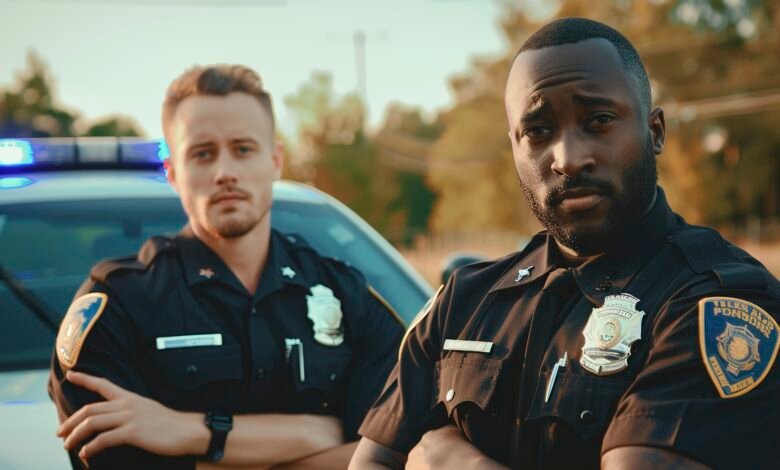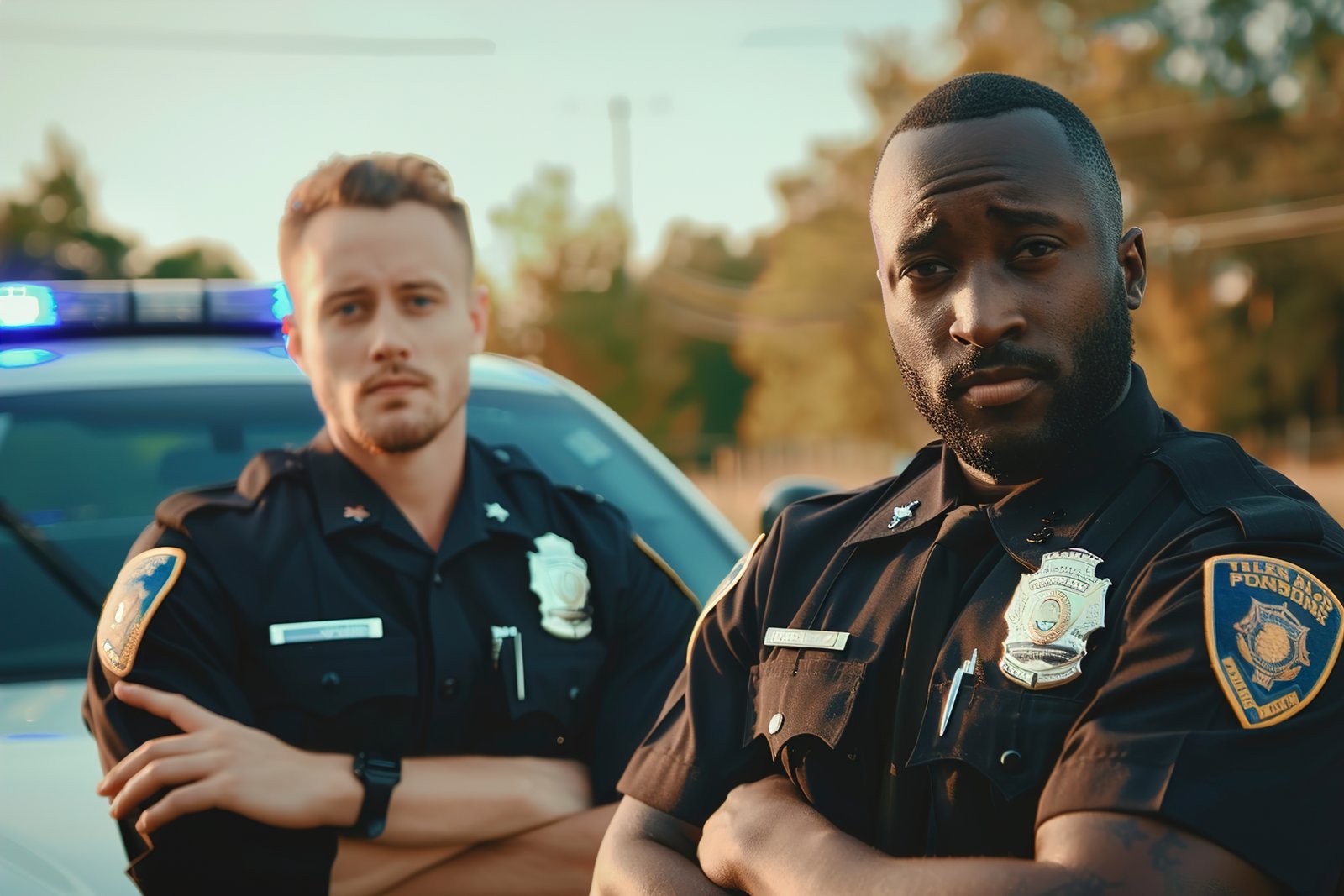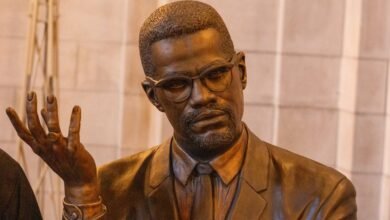
Paterson’s Gamble: Trading Home Rule for Human Rights in a City on the Edge
Introduction: The Last Call of Najee Seabrooks
The first call for help came from Najee Seabrooks himself. Just before 8 a.m. on March 3, 2023, the 31-year-old crisis intervention worker, a man whose job was to pull others back from the brink of violence, dialed 911. He told the dispatcher he needed an immediate escort to his car, that someone was making death threats against him. He would call six more times, his voice a mix of fear and desperation, as he barricaded himself inside the bathroom of his brother’s apartment on Mill Street in Paterson, New Jersey.
What unfolded over the next five hours was not just the tragic end of one man’s life, but the dramatic and violent culmination of a city’s long, painful history with its own police force.When officers from the Paterson Police Department (PPD) arrived, they found a man they knew well, not as a threat, but as a partner.
Seabrooks worked for the Paterson Healing Collective, a nonprofit group trained in de-escalation, a man who built relationships with gunshot victims to persuade them not to retaliate. Now, he was the one in crisis. His family told police he was hallucinating, possibly from a bad reaction to something he smoked, and begged them to send an ambulance. His mother, Melissa Carter, arrived, her pleas echoing in the hallway: “I’m your mother — why are you doing this? Open the door, Najee”.The police response, however, treated a mental health emergency as a tactical siege. Officers arrived in riot gear, carrying shields and training their guns on the bathroom door.
A sergeant tried to connect with him—”What’s going on, my love?”—but the situation quickly escalated when Seabrooks, in his distress, claimed to have a gun and two knives.The cruelest irony of the day was that the very people trained to handle this exact scenario—Seabrooks’ own colleagues from the Paterson Healing Collective—were on the scene, but barred from helping. They arrived outside the apartment building, texting with Seabrooks and pleading with police to let them intervene, but an officer told them they were not allowed to enter. Liza Chowdhury, Seabrooks’ boss, would later state her firm belief that had they been allowed to help, Seabrooks would still be alive.Instead, the standoff dragged on.
Inside the bathroom, Seabrooks’ condition deteriorated. A loud crash was heard, water began flooding the apartment, and a fire alarm went off as he apparently set a small fire. Officers said he was cutting himself and threw an unknown liquid at one of them. His words became a cry of despair: “Just let me die,” he was heard saying. “I’m dying slow”. An officer responded, “No, come on. I want to help you”. But help never came. Just after 12:30 p.m., after a four-hour standoff, the bathroom door opened. Body camera footage shows Seabrooks emerging, shirtless and holding a knife. An officer yelled, “Drop it,” and then shots rang out. Seabrooks was pronounced dead at St. Joseph’s Medical Center, just over five hours after his first call for help.
The city erupted in bitter protest. Yet, in a move that shocked few in the community, a state grand jury later declined to press criminal charges against the officers involved. Activists were “outraged but not surprised,” a sentiment that captured a generation of experience with a justice system they felt rarely held police accountable. The Seabrooks family filed a wrongful death lawsuit, alleging police had escalated the situation when they should have de-escalated it.
Najee Seabrooks’ death was the “last straw”. It was the flashpoint that forced a reckoning decades in the making. Three weeks later, New Jersey Attorney General Matt Platkin took the extraordinary step of seizing control of the Paterson Police Department, citing “years of blatant police misconduct towards, in particular, the Black and brown people of Paterson”. The killing of a man known for healing had exposed a wound so deep that local control was no longer deemed viable. This report is the story of that wound, of the community’s desperate gamble to heal it, and of the central question that now hangs over Paterson: In a city where the protectors have long been perceived as predators, what does the path to justice and safety truly look like?
Table 1: Timeline of a Tragedy – The Final Hours of Najee Seabrooks
| Time (March 3, 2023) | Action/Event |
| 7:43 a.m. | Paterson police officers respond to a 911 call from Najee Seabrooks, who is in distress and has barricaded himself in his apartment bathroom. Family members on scene report he is hallucinating and has knives. |
| 8:06 a.m. | A family member tells an officer, “It’s my first time ever seeing him like this”. |
| 8:07 a.m. | A police sergeant attempts to talk to Seabrooks through the bathroom door. He asks her for identification. |
| ~8:30 a.m. | Members of the Paterson Healing Collective, Seabrooks’ employer and a group trained in de-escalation, arrive on scene but are denied entry by police. |
| 10:15 a.m. | A loud crash is heard from the bathroom. Water begins flooding the apartment. Police report Seabrooks is cutting himself with knives and has started a fire. |
| 10:26 a.m. | Officers attempt to break into the bathroom. They report Seabrooks threw an unknown liquid in an officer’s face. |
| 12:28 p.m. | Body-worn camera footage shows an officer with a shield pointing a gun at the bathroom door. Police use nonlethal projectiles. |
| ~12:33 p.m. | Seabrooks emerges from the bathroom holding a knife. Officers Anzore Tsay and Jose Hernandez fire their weapons, fatally wounding him. |
| ~12:45 p.m. | Seabrooks was pronounced dead at St. Joseph’s Medical Center. |
Part I: The Long Shadow of the Badge: A Legacy of Impunity
The state’s seizure of the Paterson Police Department was not a sudden, impulsive reaction to a single tragedy. It was the long-overdue consequence of a deep, systemic rot that had festered for decades, a response to a department that many in the city’s Black community had come to view not as protectors, but as an occupying force. The history of policing in Paterson is a story written in statistics of racial disparity, punctuated by shocking acts of corruption, and underscored by a near-total failure of internal accountability. For years, the evidence mounted, demonstrating with chilling clarity that local control had catastrophically failed the city’s Black and brown residents.
A History of Violence and Bias
The friction between Paterson’s Black community and its police force is woven into the city’s modern history. It smoldered during the civil unrest of the mid-1960s and was immortalized in Bob Dylan’s 1975 song “Hurricane,” which chronicled the story of boxer Rubin “Hurricane” Carter, a Black man wrongly convicted of murder by an all-white jury in Paterson—a conviction later overturned by a federal judge who cited its basis in “racism rather than reason”. This legacy of mistrust has been rekindled again and again, with each new incident of police violence reinforcing a narrative of injustice.In recent years, that narrative has been backed by damning data.
An investigation by the Police Executive Research Forum found that between 2018 and 2020, Black residents—who constitute about a quarter of Paterson’s population—were the subjects of 57% of the police department’s more than 600 uses of force. An amicus brief filed by the ACLU of New Jersey and other social justice groups put the numbers in even starker terms: Black people make up 24% of the city’s population but account for 52% of use-of-force incidents.
This disparity is not a subtle statistical anomaly; it is a lived reality. The violence has been lethal. Since 2015, Paterson police have been responsible for seven fatal shootings, a number that rivals the far larger New Jersey State Police force. Between 2019 and 2023, Paterson recorded more police-involved killings than any other municipality in the state. This record of violence earned the department a reputation as one of the most troubled in New Jersey, a reputation built on the bodies of Black and brown men.
Table 2: PPD Use of Force – A Tale of Two Cities
| Demographic Group | % of Paterson Population | % of PPD Use-of-Force Incidents (2018-2020) | % of Statewide Use-of-Force Incidents (2020-2023) |
| Black | 23% | 57% | 45% |
| Hispanic | 34% | 34% | 9% |
| White | 7% | 7% | 14% (Statewide rate is double PPD’s) |
The “Robbery Squad”: Corruption as Policy
Beyond the statistics of disproportionate force lies a story of brazen criminality. A multi-year federal corruption probe revealed that a unit within the PPD was operating less like a police squad and more like an organized crime syndicate, earning them the moniker of a “Robbery Squad”. This was not a case of a few “bad apples”; it was a systematized, almost bureaucratic approach to theft and abuse, supervised and sanctioned by a police sergeant. The central figure was Sgt. Michael Cheff, who was convicted and sentenced to 33 months in prison for leading a crew of officers who routinely conducted illegal stops and searches to steal money and drugs from residents.
The details of their operation, revealed in court documents and testimony, are shocking. Officers used code words like “weekend mangoes” in text messages to refer to their plans for illegal cash seizures. They developed a methodology: steal cash, log a small portion of it into evidence to avoid suspicion, and then split the rest. In one notorious incident from November 2017, Cheff and his officers arrested a man, stole cash from him, and then went to his apartment. After tricking the man’s mother into allowing a search, Cheff emptied a safe containing what the victim estimated was $2,700 and narcotics.
Cheff then handed another officer just $319 to log into evidence, later filing a false report claiming the money was found on a shelf. Text messages between the officers captured their casual criminality, with one complaining that Cheff “got us for over a stack today” because he “grabbed the cash”. This predatory policing was normalized. One officer texted another, joking about their tactics: “Everybody’s car is getting searched… And [we’ll] threaten to lock up their momma if they don’t let us search their house [laughing my ass off]”.
The corruption was pervasive. At least eight officers were ultimately charged in the federal probe. Officer Kevin Patino pleaded guilty to using excessive force in two separate beatings of civilians. Officer Frank Toledo admitted to a litany of abuses, including the sadistic practice of “brake-checking”—slamming on the brakes of his police car to injure a handcuffed suspect in the backseat, an act he recorded on his cell phone and shared with others. For the Black and brown community, these cases confirmed their worst fears: a routine traffic stop was not a matter of law enforcement but a potential shakedown, transforming the concept of “public safety” into “public predation.”
A System of Failed Accountability
The culture of violence and corruption was able to thrive because the internal mechanisms designed to prevent it were utterly broken. The department’s own records show a near-complete failure to police itself. An amicus brief filed by the ACLU-NJ revealed the staggering fact that between 2014 and 2018, the PPD’s Internal Affairs unit substantiated only one out of 183 complaints of excessive force filed by citizens. This 99.5% failure rate sent a clear message: officers had little to fear from their own department.
Even when the city’s leadership tried to intervene, the depth of the problem became more apparent. In 2019, following the first wave of federal arrests, Mayor Andre Sayegh ordered an external audit of the department. The resulting 2022 report from the Police Executive Research Forum was a damning indictment. It found that PPD supervisors consistently failed to review use-of-force incidents and that the department lacked a comprehensive de-escalation policy. While the community was lodging hundreds of complaints, and the FBI was successfully prosecuting officers for the very behavior being reported, the department’s internal systems were actively shielding them.
This institutional collapse created the vacuum that necessitated external intervention. It led Attorney General Platkin to diagnose a “revolving door” of police leadership that had created “dysfunction within police ranks and a lack of trust in local law enforcement”. It is this history that gives weight to the words of local Black Lives Matter organizer Zellie Thomas, who declared, “you cannot rebuild trust when trust never existed in the first place”. The state takeover was not just about the killing of Najee Seabrooks; it was about dismantling a system that had made his death, and so many other injustices, tragically predictable.
Table 3: The Road to State Control
| Date/Year | Event |
| 2018 | A sweeping federal corruption probe into the PPD begins, leading to the arrest and eventual conviction of at least eight officers, including Sgt. Michael Cheff, for operating a “Robbery Squad”. |
| 2019 | In response to the growing scandal, Paterson Mayor Andre Sayegh orders a comprehensive external audit of the police department. |
| Feb. 2022 | The audit by the Police Executive Research Forum is published, detailing deep systemic failures, including disproportionate use of force against Black residents, a lack of supervisor review, and no meaningful de-escalation policy. |
| March 3, 2023 | Paterson police officers shoot and kill Najee Seabrooks, a 31-year-old community anti-violence worker, during a mental health crisis, sparking widespread protests. |
| March 27, 2023 | New Jersey Attorney General Matt Platkin announces the state is seizing control of the Paterson Police Department, citing a history of misconduct and a complete breakdown of public trust. |
Part II: The Devil’s Bargain: Trading Home Rule for Civil Rights
The state’s takeover of the Paterson Police Department ignited a fierce political and legal firestorm, pitting the cherished American principle of local democratic control against the desperate need for basic constitutional rights. For Paterson’s Black community, this was no abstract debate. It was a painful but pragmatic calculation—a devil’s bargain. After decades of abuse under local leadership, many community advocates and residents concluded that the only path to safety was to support the temporary surrender of their own city’s power. This decision to trade the ideal of “home rule” for the promise of human rights reveals the profound depth of their desperation and the complete failure of the local system they sought to escape.
The Legal War
The moment Attorney General Platkin announced the takeover, the battle lines were drawn. Paterson Mayor Andre Sayegh, backed by the local police union, immediately filed lawsuits to regain control, arguing that the Attorney General had no legal authority for such a sweeping action and that it was an undemocratic violation of state law. The core of their argument rested on the principle of “home rule”—the idea that municipalities have the right to govern their own local affairs, including their police departments.
The legal fight was a rollercoaster. Initially, a state appellate court sided with the city, unanimously ruling that the Attorney General did not have the authority to take over the department and ordering control returned to local officials. That order, however, was quickly put on hold as the case ascended to the state’s highest court. The final showdown came in July 2025. In a landmark, unanimous decision, the New Jersey Supreme Court reversed the lower court’s ruling, cementing the Attorney General’s control for the foreseeable future.
The court’s reasoning was nuanced and critical. It did not grant the Attorney General a blanket power to take over any police department at will. Instead, the justices focused on the specific actions of the state legislature after the takeover had begun. They found that the legislature, by passing laws to facilitate the leadership of the new Officer-in-Charge and, crucially, by appropriating $10 million in annual state aid specifically for the Paterson police takeover, had given its implicit authorization and blessing to this particular intervention. In essence, the legislature’s support after the fact provided the legal foundation that the court found sufficient. The ruling was a decisive victory for the state, but it carefully left the broader question of the Attorney General’s inherent power open, suggesting it was a matter for lawmakers to clarify in the future.
The Community’s Calculus: A Pragmatic Surrender
While city hall fought to reclaim power, a powerful coalition of Black community leaders and social justice organizations celebrated the Supreme Court’s decision as a clear “win for the people of Paterson”. Groups like the New Jersey Institute for Social Justice (NJISJ) and the ACLU of New Jersey had filed amicus briefs in support of the state, arguing that the takeover was a necessary tool to stop the abuse of vulnerable communities.
Their position, which may seem counterintuitive, was born of bitter experience. The principle of “home rule,” so passionately defended by the mayor, had become a hollow concept for a community that had endured decades of harm from its own local institutions. From their perspective, “home rule” had come to mean the city’s right to perpetuate a system of racist and predatory policing. As Amol Sinha, Executive Director of the ACLU-NJ, starkly put it, “local police departments cannot police themselves”. Henal Patel of the NJISJ echoed this sentiment, stating, “The people of Paterson, especially its Black and Brown residents, deserve a police force that serves and protects them – not one that harms them”.
This was the community’s grim calculus. The abstract ideal of local democratic control was weighed against the concrete reality of police brutality, corruption, and a complete lack of accountability. Faced with this choice, they made a pragmatic, if uncomfortable, decision: to support a temporary surrender of local governance in exchange for the promise of meaningful reform and the enforcement of their basic constitutional rights. It was a calculated gamble that an outside authority, however imperfect, was better than the proven failure of the system they knew. The argument was not simply State versus City; it was a plea for constitutional rights to supersede a failed local authority.
The Political Fallout
The conflict created a palpable tension between state and city leadership. Mayor Sayegh consistently framed the takeover in stark terms, calling it “unlawful, it’s undemocratic, and quite frankly it’s un-American”. He positioned himself as the defender of the people’s democratic will, arguing that he was elected to oversee the city, not the Attorney General. Yet, beneath the political rhetoric lay a complex fiscal reality.
Paterson is a “cash strapped city”. The state’s intervention came with a massive financial commitment: an additional $10 million in annual state aid, representing a roughly 20% boost to the city’s law enforcement budget. While fighting the takeover in court, Mayor Sayegh simultaneously welcomed this infusion of resources, acknowledging, “We know that we are resource strapped in our city”.
This dynamic reveals how the state’s intervention was not just a legal or administrative action, but a strategic use of power. The promise of resources that the city desperately needed created a powerful incentive structure. The state’s financial leverage effectively blunted local political resistance. The takeover, by bringing with it the funds for new technology, overtime for crime crackdowns, and comprehensive reforms, created the conditions for its own justification, making it politically difficult for the city to reject the resources even as it fought the authority that came with them.
Part III: Life in the Balance: Between the Gangs and the Guard
For the Black residents of Paterson, the struggle for safety is a war fought on two fronts. On one side are the street gangs, whose violent rivalries and drug trafficking operations destabilize neighborhoods and endanger families. On the other is the police department, an institution that for generations has been a source of fear, corruption, and violence rather than a trusted protector. This is the daily reality of the “double bind”: a community caught between the need for protection from criminal violence and a profound, historically justified mistrust of the very people tasked with providing it. This precarious existence shapes every aspect of life, from raising children to running a business, in a city where the line between guardian and threat has been dangerously blurred.
The War on the Streets
While the battle for the soul of the police department rages, a more conventional war against street violence continues unabashed. Federal, state, and local law enforcement agencies collaborate through the Paterson Violent Crime Initiative (VCI), an effort formed in 2020 to combat the city’s pervasive gang activity. The threat is real and deadly. A recent indictment charged four members of the “4K” street gang with committing a violent crime in aid of racketeering for their role in a shooting against the rival “230 Boyz” gang.
These gangs are not just fighting over turf; they are at the center of the city’s narcotics trade, trafficking deadly drugs like heroin and fentanyl that further poison the community. The violence is often retaliatory and brutal. In one case, members of the “100k” gang were indicted for a racketeering conspiracy that included the murder of a rival in retaliation for the death of one of their own high-ranking members. This constant cycle of violence creates an environment of fear and insecurity that residents are desperate to escape.
The Double Bind
This need for safety creates the central paradox for Black residents. They demand protection from the gangs, but how can they turn to a police force they have been conditioned to fear? The deep well of mistrust, dug over decades of misconduct, severely hampers any potential for effective community policing. This was the raw emotion on display at a community listening session held by Attorney General Platkin at St. Luke’s Church, where residents shared painful personal stories of their encounters with police.
The mother of Najee Seabrooks made an emotional plea for “justice for my son,” while Black Lives Matter organizer Zellie Thomas articulated the community’s demand for tangible consequences: “We need terminations. We need accountability”. The sentiment is not that all police are bad, but that the systemic issues are so corrosive they poison the entire institution. As one resident put it, there are “some good cops, but… I don’t trust them because of all the negative energy we get from the bad ones”.
This breakdown of trust has a direct impact on public safety. When residents are unwilling to cooperate with investigations, share information, or serve as witnesses because they fear the police as much as the criminals, a vacuum is created. In this space, gangs can operate with greater impunity. The failure of constitutional policing, therefore, does not just harm individuals in direct encounters; it indirectly fuels the very street violence it is supposed to prevent, creating a vicious cycle that traps the community in the middle.
The Economic Crossfire: Black Business and Community Life
This climate of insecurity inevitably spills over into the economic life of the community, impacting the vitality of Black-owned businesses that have long been a cornerstone of Paterson. The city has a rich history of Black entrepreneurship, a legacy stretching back to at least 1927, when there were 26 documented Black-owned businesses. Generations of families built institutions like McDowell’s Barber Shop (now closed), a community hub; E & A Soul Food Restaurant (now closed), a purveyor of cultural cuisine; and the prominent Bragg Funeral Home.
These businesses are more than just commercial enterprises; they are vital community spaces. However, their survival depends on a sense of public safety. When a city gains a reputation for both unchecked gang violence and predatory policing, it stifles the economic ecosystem. Foot traffic dwindles as potential customers fear for their safety. Residents become hesitant to be out after dark. The general climate of instability discourages investment and makes it harder for these essential businesses to thrive. The double bind of violence and police misconduct creates an economic crossfire, threatening a legacy of Black enterprise that has been a source of pride and stability for nearly a century.
The Next Generation: Youth in the Crucible
Nowhere is the impact of this dual threat more acute than on Paterson’s youth. In response, the community has built a network of programs designed to create safe havens and positive alternatives to the streets. These are not just after-school activities; they are essential infrastructure for survival. Organizations like the Boys & Girls Club of Paterson and Passaic, the city’s own Recreation department, and the NJCDC’s Paterson Youth Council provide everything from academic tutoring and leadership training to safe evening centers where kids can simply be kids.
Many of these programs are based in churches and community centers, representing a grassroots effort to fill the void left by failed public institutions. They are a form of community self-policing—an attempt to provide the structure, mentorship, and safety that the official systems have failed to deliver. While this demonstrates the incredible resilience of the Paterson community, it is also a stark indictment of a city that has failed to provide its children with the most basic element of a healthy upbringing: a safe environment.
Part IV: The State’s Blueprint: Can a System Be Remade?
In the wake of the takeover, the New Jersey Attorney General’s Office unveiled an ambitious and sweeping 55-point Strategic Plan, a blueprint designed to fundamentally remake the Paterson Police Department. Backed by a massive infusion of state funds, the plan touches every facet of the department, from leadership and technology to officer wellness and community engagement. The state has touted its progress, claiming that 91% of its goals were achieved by June 2025.But for a community weary of broken promises, the plan is being viewed through a lens of deep skepticism. The central question is not whether a checklist can be completed, but whether these reforms can penetrate a deeply ingrained culture of impunity and genuinely change the way police interact with the people they are sworn to serve.
The Pillars of Reform
The state’s strategy is built on five core pillars: Leadership, Accountability, Crime Reduction, Officer Wellness, and Community Engagement. The entire effort is fueled by a significant financial investment of $10 million in annual recurring state aid for three years, a roughly 20% increase to the department’s operating budget that has paid for everything from overtime for crime crackdowns to new technology and equipment. The plan is a top-to-bottom overhaul, but its success will be judged by its impact on the ground, in the daily encounters between officers and citizens.
Technology: Accountability or Advanced Surveillance?
A major component of the reform plan is a heavy investment in modern technology. The centerpiece is a new Real Time Operations Center (RTOC), a command hub that integrates live video feeds, gunshot detection technology, and automated license plate readers to enable faster, data-informed police responses. Perhaps the most innovative element is the adoption of artificial intelligence tools to audit 100% of officer body-worn camera (BWC) footage, scanning for professionalism and potential misconduct.
The state presents these tools as revolutionary instruments of accountability. However, from the perspective of a community that has been historically over-policed, this technological arsenal raises complex questions. While AI-audited body cameras could deter abuse, the same integrated surveillance network that promises faster response times could also become a tool for more efficient and pervasive monitoring of Black and brown neighborhoods. The plan represents a potential mismatch between the solution and the problem. The community is asking for a change in culture—for more respect, empathy, and humanity—and the state is responding with a technocratic overhaul. The long-term success of these initiatives hinges on whether these data-driven systems can truly alter the fundamental human behavior of officers on the street.
Accountability: Genuine Shift or Public Relations?
To address the department’s catastrophic failure of internal oversight, the plan includes several structural changes. The Internal Affairs office has been relocated to a neutral, more accessible community location at 100 Hamilton Street. A first-in-New-Jersey Risk Management and Early Intervention Program (EIP) has been created to continuously monitor officer conduct—tracking use-of-force incidents, complaints, and other data points to identify at-risk officers before their behavior escalates. Furthermore, use-of-force policies have been updated and training in de-escalation and crisis intervention has been expanded.
These are, on paper, significant steps. But the community’s judgment of these reforms will be based on outcomes, not inputs. Can a relocated office and a new data-monitoring program truly change a culture where, for years, only 1 out of 183 excessive force complaints was substantiated? The community’s demand is for “terminations, not just training”. A critical test of this new accountability structure will be its handling of the officers involved in the killing of Najee Seabrooks, who are believed to still be working as police officers. Until there are tangible consequences for misconduct, these reforms risk being perceived as little more than public relations.
Community Engagement: Partnership or Pacification?
A core tenet of the state’s plan is to rebuild trust through “community-first” initiatives. The old Community Policing Unit has been replaced by a new Community Partnerships Bureau, intended to work more closely with residents and local organizations. A Police Advisory Council and a Police Clergy Council have been formed to provide community input on departmental policies. On the street, officers have begun distributing contact cards with QR codes that link to public feedback tools.
The question from the community is whether these initiatives represent a genuine shift toward partnership or a more sophisticated form of top-down pacification. Does an advisory council have any real power to enforce its recommendations, or is it merely for show? Can a QR code on a business card substitute for the daily, respectful interactions that are the true foundation of trust? Activists have expressed concern that even with these reforms, the model of safety still centers the police, rather than empowering the community to define and create safety for itself.
Addressing the Core Failure: Mental Health Crisis Response
The most direct response to the tragedy that triggered the takeover has been in the area of mental health crisis response. The state legislature passed the Seabrooks-Washington Act, a law named for Najee Seabrooks and another man killed by police during a mental health crisis, which provides grant funding for community-based violence intervention groups.This is a critical acknowledgment of the vital role that organizations like the Paterson Healing Collective should play. The department has also instituted new supervisory response protocols for all calls involving a person in crisis and has expanded crisis intervention training for officers.
This is perhaps the most crucial test of the entire reform effort. The ultimate measure of change will be whether the new system truly integrates community experts and de-escalation specialists, or if it continues to default to a law enforcement-led response for what are fundamentally public health emergencies. The answer will determine whether the lessons of Najee Seabrooks’ death have truly been learned.
Part V: Paterson in the American Mirror: A State-Level Experiment
The crisis in Paterson, while deeply local, does not exist in a vacuum. It is a microcosm of a national struggle over policing, accountability, and racial justice. The state-led takeover of the Paterson Police Department represents a rare and significant departure from the more common model of federal intervention, positioning the city as a critical, real-time experiment in police reform. By comparing Paterson’s journey to that of cities like Ferguson, Baltimore, and Chicago, which have been subjected to federally enforced consent decrees, we can better understand the unique potential—and the potential pitfalls—of this state-level approach.
A Unique Model of Intervention
The power of a state attorney general to unilaterally seize control of a municipal police department is highly unusual. In fact, it is a power that no other state explicitly grants its attorney general, making the New Jersey case a unique legal and political landscape. The more established path to reforming troubled police departments in the United States is through federal intervention. Under a 1994 law, the U.S. Department of Justice (DOJ) has the authority to investigate and sue local law enforcement agencies for engaging in a “pattern or practice” of unconstitutional conduct. These lawsuits often result in a consent decree—a binding, court-enforced settlement agreement designed to bring about specific, measurable reforms.
Comparing Paterson to Ferguson, Baltimore, and Chicago
The differences between Paterson’s state-led takeover and the federal consent decree model are substantial. Federal consent decrees, like those implemented in Baltimore, Chicago, and Ferguson following high-profile incidents of police violence, are overseen by a federal judge and an independent monitor who reports to the court. This model provides a layer of judicial oversight and independent evaluation. However, it can also be a slow, cumbersome, and expensive process, with success often hinging on the willingness of local officials to cooperate and the effectiveness of the appointed monitor.Paterson’s takeover, by contrast, is a direct executive action. The oversight is managed not by a court-appointed third party, but directly by the Attorney General’s office and its handpicked appointees. This approach has the potential to be faster, more decisive, and more directly managed. The state can immediately implement its own leadership, policies, and funding priorities. However, it also raises questions about checks and balances, as the body imposing the reforms is also the one judging their success, without the built-in separation of an independent monitor and a federal judge.
The “De-Policing Hypothesis” and Paterson’s Contradiction
Perhaps the most fascinating aspect of Paterson’s story, when viewed in the national context, is how it appears to challenge a prominent and controversial theory of police reform: the “de-policing hypothesis” or “Ferguson Effect.” This theory posits that intense public scrutiny and aggressive reform efforts, like those that follow a viral incident of police violence, can cause officers to become less proactive in their duties out of fear of lawsuits or public backlash. This withdrawal from enforcement, the theory goes, can lead to a dangerous increase in crime.
There is stark evidence to support this hypothesis in cities that have undergone federal intervention. A 2020 study by the National Bureau of Economic Research (NBER) found that in the five cities where DOJ investigations were launched immediately after a viral incident of deadly force against an African American civilian—Baltimore, Chicago, Cincinnati, Ferguson, and Riverside—there was a large and statistically significant increase in homicides and total felony crimes. In Chicago, for example, police-civilian interactions plummeted by almost 90% in the month after the investigation into Laquan McDonald’s death was announced. The study estimated that these investigations collectively led to nearly 900 more homicides than would have otherwise been expected.
Paterson, however, presents a powerful counter-narrative. The state takeover followed the exact same pattern—a high-profile, protested killing of a Black man—yet the reported outcomes are dramatically different. The Attorney General’s office has touted “historic reductions in violent crime,” including a nearly 65% drop in shooting victims and a 54% drop in shooting incidents in the two years following the takeover compared to the two years prior. This makes Paterson an incredibly important case study. Why has this aggressive, top-down intervention seemingly avoided the “Ferguson Effect”? The answer may lie in the specific nature of the state-led model. The massive infusion of resources—the $10 million in annual state aid—and a dedicated focus on officer wellness, including the creation of a new Health and Wellness Unit, may have successfully mitigated the morale-crushing effects that can lead to de-policing. This suggests that reform, when paired with robust financial and institutional support for officers, may be the key to achieving accountability without sacrificing public safety, offering a potential roadmap for other cities struggling with the same challenges.
Table 4: State vs. Federal Intervention – Two Paths to Police Reform
| Feature | Paterson State Takeover | Federal Consent Decree |
| Legal Basis | NJ Attorney General’s authority as chief law enforcement officer, implicitly affirmed by state legislative action. | Federal law (34 U.S.C. § 12601) authorizing DOJ to sue for a “pattern or practice” of misconduct. |
| Initiating Body | New Jersey Attorney General’s Office (Executive Branch). | U.S. Department of Justice, Civil Rights Division (Executive Branch). |
| Oversight Mechanism | Direct management by the AG’s office and its appointed Officer-in-Charge. | A court-appointed, independent monitor who reports to a federal judge. |
| Key Examples | Paterson, NJ. | Chicago, IL; Baltimore, MD; Ferguson, MO; Newark, NJ. |
| Reported Impact on Crime | Significant decrease in violent crime and shootings reported post-takeover. | Often associated with an increase in homicides and crime (the “de-policing hypothesis”) in cases following viral incidents. |
Conclusion: The Unfinished Work
As the state’s takeover of the Paterson Police Department moves into its third year, the city finds itself at a critical juncture. Attorney General Platkin has declared the 55-point reform plan nearly complete, reiterating that the “long-term goal” is to eventually return control to local officials. This raises the most pressing questions for Paterson’s future: What are the true benchmarks for success? Who decides when “the job is done”? And has this unprecedented intervention truly begun to heal the deep, generational wounds between the community and its police?There are tentative signs of progress. The reported drop in violent crime is a significant and welcome development for a community long plagued by insecurity. Even some activists who once led protests with bullhorns and picket signs now concede that the relationship between the police and the public feels different, that “the flow, the way people even respond to the police department, it’s different”. The state’s investment in new technology, accountability systems, and community partnerships represents the most comprehensive attempt at reform in the department’s troubled history.
Yet, this progress remains fragile, and trust, once shattered, is not so easily restored. The ultimate success of this endeavor will not be measured by completed checklists or crime statistics alone. It will be measured by whether the deep-seated culture of impunity has been genuinely eradicated. It will be measured by whether the new accountability systems have the teeth to terminate, not just retrain, officers who betray their oath. It will be measured by whether a Black mother or father in Paterson, seeing their child in the throes of a mental health crisis, can call 911 with the confidence that help, not harm, is on the way.
The Black community of Paterson made a profound and difficult gamble. They traded the principle of local control for the promise of basic human rights. They supported an outside power in the hope that it could fix a system that was fundamentally broken from within. The initial returns on that gamble—a reduction in violence and a framework for reform—are promising. But the work is far from finished. The state takeover was a necessary, drastic, and painful intervention. The true test will be what happens when the state leaves. The ultimate measure of success will be whether the Black residents of Paterson can one day walk their streets with a sense of safety, dignity, and trust—not just from their neighbors, but from the very people who wear the badge.







One Comment